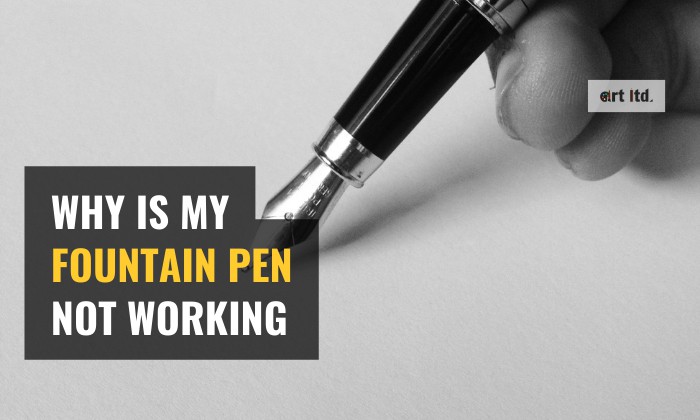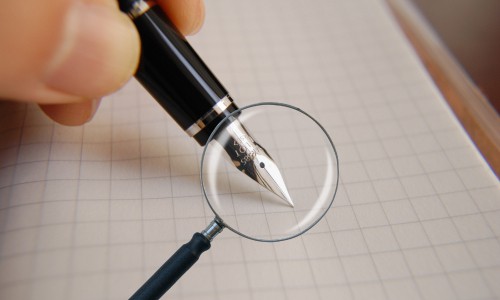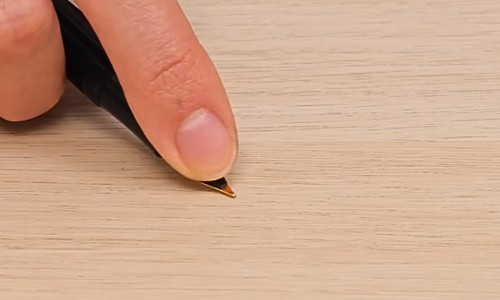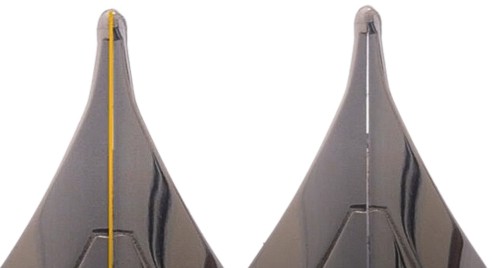As you eagerly anticipate smooth strokes on paper, encountering a dry or clogged fountain pen can be disheartening. Thus, you may ask: Why is my fountain pen not working?
Normally, a fountain pen can stop working due to issues such as ink drying within the nib and feed, misalignment of the nib, use of incompatible or clogged ink, lack of maintenance, or temperature-related concerns.
As you read on, we will explore common issues as to why your fountain pen is not writing well and offer solutions that will assist you in fixing your treasured writing companion.
Table of Contents
Troubleshooting Common Fountain Pen Issues and Their Solutions
Fountain pens, celebrated for their elegance and precision, occasionally encounter performance hiccups.
Wondering how to get a fountain pen started smoothly once again? Let us discuss some of the most common fountain pen issues and provide comprehensive solutions to help you enjoy a seamless writing experience.
1. Scratchy Nib
Is the ink not flowing from the nib? Chances are that you have a scratchy nib—one of the main reasons a fountain pen won’t write. This issue often stems from
misaligned tines or imperfections at the nib’s tip. To fix a fountain pen nib, the potential solutions are as follows:
Tine Alignment
Start by checking the sideways alignment of the tines, the two points of the nib. If one tine is lower or higher than the other, it may result in scratchiness.
To fix the issue, place one finger under the feed and the other on the higher tine. Gently press the tine until it’s aligned with the other – make sure you don’t use too much force, as this can result in an overly curved tip.
That said, should the nib become deformed, press it down in the opposite direction using your index finger.
Tip Imperfections
If your nib is still scratchy despite aligned tines, use a magnifier to inspect the nib’s tip for asymmetrical tines or damaged surfaces like pits or scratches.
In these cases, replacing the nib would be the best solution.
However, if you notice debris stuck between the tines, you can easily tackle the issue. Simply floss the tines using a paper-thin brass sheet to remove any dirt or debris, which will unclog the fountain pen.
Nib Polishing
As a last resort after checking tines, you can attempt to smooth out the nib’s tip gently, provided that its tines are properly aligned.
To start, fill the pen cartridge with ink and wait for it to thoroughly saturate the feed. Then, draw several figure 8s on a piece of paper with a rough surface like how you normally would write.
Test the pen for smoothness afterward. Repeat this step if necessary.
2. Poor Ink Flow
A fountain pen that dries out while writing can be really annoying, as it can lead to skipping or faded lines. Before doing the diagnosis process, ensure your pen is clean to rule out clogs caused by dry ink or paper fibers.
After cleaning, these are the steps you can do to get a fountain pen to flow again continuously:
Nib and Feed Alignment
Check that the nib and feed are properly aligned within the pen. The nib’s slit should align with the ink channel on top, visible through the breather hole.
If misaligned, gently grip the nib with one hand and the feed with the other, then twist them slightly until they’re properly aligned.
Nib-to-Feed Contact
Ensure that the nib sits firmly against the entire top surface of the feed. Should there be any gap between the nib and feed, pressing the nib down gently will do the trick.
It is best to do this technique on the edge of a table or surface. Place the nib against the edge. Using your index finger to support the feed, gently press the nib’s base down and slowly roll up to the tip.
Keep doing this until the gaps disappear.
Nib Slit Examination
Hold the clean, dry pen up to light to see if it shines through the nib’s slit. Use a magnifier to examine the nib. Ensure the slit gradually tapers towards the nib’s end while keeping a slight gap between the tines.
If the tines do touch, use the brass sheet to floss them until they’re properly separated.
Note: These procedures can be time-consuming, and applying excessive pressure or force can cause permanent damage. Be patient and cautious as you tackle the issue.
3. Excessive Ink Flow
Aside from ink not coming out of pens, there are also scenarios where they produce too much ink.
A fountain pen that releases excessive ink flow may produce unwanted broad and wet lines that take longer to dry. Unfortunately, this may lead to ink leaking or dripping from the pen nib.
Try to apply the following techniques to settle this issue:
Temperature Management
Understand that heat, such as warm weather or body temperature, can cause the air inside the pen to expand, forcing ink out of the feed. To mitigate this problem, ensure the reservoir remains at least one-third full of ink.
This reduces the amount of air that can expand and affect ink flow. If you’re writing in hot weather, consider taking breaks or moving to a cooler environment.
Air Leak Inspection
Examine the fountain pen for potential air leaks, which can occur when the ink cartridge or converter does not create an airtight seal with the nib section. Ensure the cartridge or converter is securely installed.
Tine Tightening
If excessive ink flow persists, you can attempt to reduce it by tightening the gap between the nib’s tines.
Use your fingertips to grip those tines, firmly squeezing for 5–10 seconds. Use a rubber grip or a soft cloth to cushion your fingers during this process.
Conclusion
When you encounter the frustrating question, “Why is my fountain pen not working?” keep in mind that common issues such as scratchy nibs, poor ink flow, or excessive flow have practical and effective solutions.
Patience, care, and understanding of the needs of your classic writing tool can restore the joy of smooth, elegant writing. So, embrace your fountain pen, troubleshoot when needed, and let the ink flow seamlessly onto every page.

Art has always been a part of my life; it influences my upbringing and later my career choice. For me, it is always a part of my parenting technique. So for whichever purpose that you come to art, you can start here with us.







